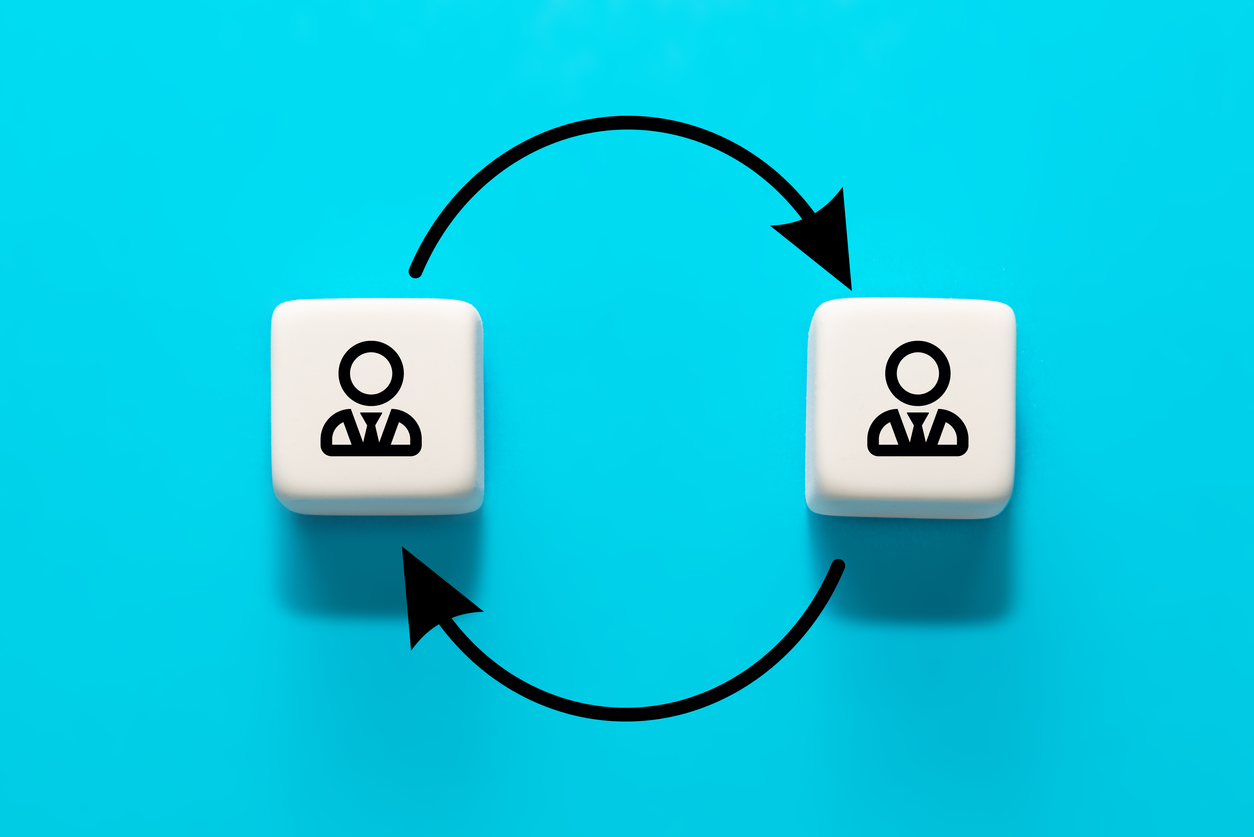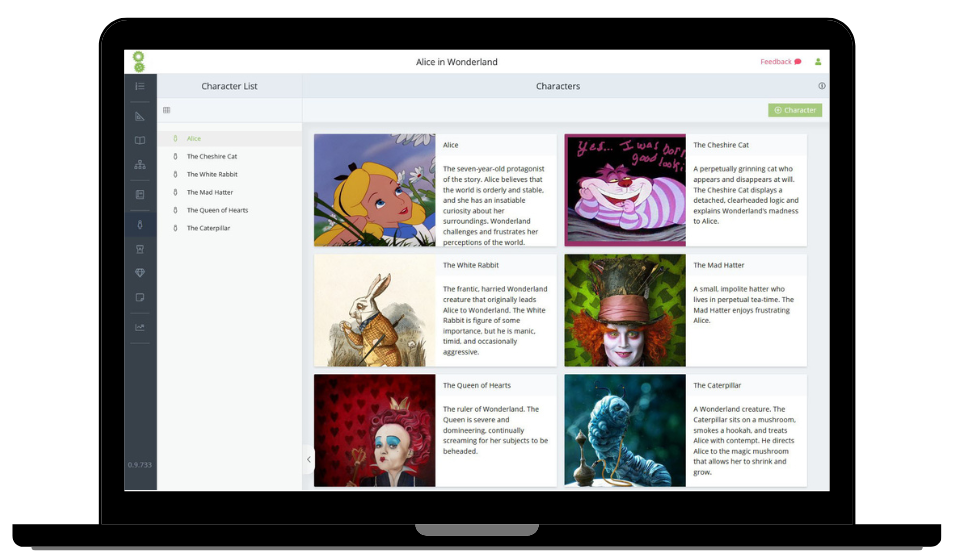
Spice Up Your Story With Flat Characters (Yes, Really!)
A flat character is a bad character, right?
Having one in your story means you haven’t done your job as a writer. You haven’t given enough detail or injected enough personality or backstory so your readers will fall in love with them.
And that must mean you have to improve or rewrite them, right?
Wrong.
Flat characters have definite, important roles to play in stories. They’re often used to great effect by skilled authors.
They work when they move the story forward in a limited but critical way.
But while not all flat characters are bad (poorly written), most bad characters are flat.
We’ll explore the differences in this post.
After all, you can’t round out all your characters. You risk confusing, overwhelming, or even boring your audience. Readers only want to bond with important characters in your story. Overdoing it can wreck your story.
But when a character’s role or importance in your story demands more of them than the simplest descriptions, you may need to spend some time rounding them out.
As always, there are no hard and fast rules. In a primarily plot-driven story, even your main characters can be flat (more on that below.)
So how can you learn to use flat characters effectively when you need to, and transform them into complex round characters when it’s called for?
Read on to find out…
What is a Flat Character, Anyway?
A character is said to be “flat” if it is one-dimensional or lacking in complexity. Typically, flat characters can be easily and accurately described using a single word (like “bully”) or one short sentence (like “A naive and idealistic school teacher with a fragile heart of gold”). The important thing about flat characters is that they never transcend or break with the formula that defines them.—Litcharts.com
So, some further examples of Flat Characters could be:
- Ambitious businesswoman
- Reckless driver
- Friendly dog walker
- Flustered mum
- Yoga student
As readers, we don’t know much about these ‘characters’. Their backgrounds are not developed, their complete personalities aren’t shown, and we don’t have insight into their motivations.
Another sign (but not the only defining feature) of flat characters is that they don’t have an arc. They don’t experience any measurable transformation, inner journey, or personal growth (or backslide) throughout the story. They end up much the same as they were at the beginning of your book.
But it’s important to know that just because a character is flat doesn’t mean they are boring or poorly written.
Or—and this is important—that they can’t play an important role in your story telling.
Let’s have a look at why and how you might want to use Flat Characters to great effect.
Why Use Flat Characters in Your Storytelling

Can flat characters make your novel stronger?
Absolutely. Especially if they are well-written and used deliberately.
If you take only one thing away from this post, make it this:
Being flat is not automatically bad. Character depth should be proportional to the character’s importance to the story.
So, use flat characters when you need a character to serve one of a few important functions:
- To play bit parts in your story.
- To represent a specific idea or quality.
Here’s what that means.
1. Bit Part Characters
In real life we encounter many people for very short periods of time.
So in our minds, they remain defined by the role that we see them in: serving us in a restaurant, teaching us tennis, swearing at us on the road, etc.
If we tried to learn the loves, fears, hopes, quirks, childhood histories, and educational backgrounds of all these folks, we’d never make it through the day!
The same goes for flat characters in novels. You need a wide range of people to make your story world feel real, rather than just a stage occupied only by your main characters.
But there’s no need to go into depth about every single character your protagonist encounters. Even if you could, your readers would become bogged down with so many details they’d lose track of the point of the story.
2. Characters Who Exist to Represent a Specific Idea or Quality
Often, flat characters serve the story by fulfilling roles that are needed to move the main character and the story forward—like a helicopter mom or unreasonable boss who inspires the main character to take actions they might not have otherwise, like running away.
In the Harry Potter stories, bully sidekicks Crabbe and Goyle are flat characters who never evolve, but they do ratchet up the tension and make life more miserable for Harry.
Flat characters should serve a specific purpose, like adding texture to the world building or providing a particular encounter.
An Important Note About Including Flat Characters
While flat characters are needed in a good story, you do want to take care to avoid writing too many of them. Instead, focus on including characters who have an important or even critical supporting role to play in moving your novel forward. (See Examples of Flat Characters That Work below.)
Otherwise, you risk your characters turning into a muddy soup of vague faces—causing your readers to flip back to try to remember who’s who (in the case of flat bit part characters) or having all your characters feel like caricatures rather than real people (in the case of those representing a particular quality).
Next, let’s look at a related character aspect that often trips up novelists.
Understanding Flat vs. Static Characters
Some people define a flat character as one who doesn’t change, learn, or mature, or who has no real story arc, but this is confusing flat with static.
By definition, a static character does not change while a dynamic character does. In other words, your character might start the story lacking confidence and self-belief, but by the end of the story they embody those traits. That’s a dynamic character.
One reason for the confusion is that it’s true that a flat character will almost always be static (because if they did change, that would make them a round character.) But it can be helpful to know that being static is not the same as being flat.
Earlier we said flat isn’t necessarily bad. Flat becomes bad when a character you intend to be round falls flat—in other words, when the character doesn’t work well because you haven’t developed them sufficiently (yet.)
And arguably, you could have a flat character that changes from one stereotype into another, so they’re still flat—just a different kind of flat. However, this is so rare as to be negligible.
Transforming Flat Characters Into Round Ones

Naturally, there will be times when you might want to transform flat characters into round ones.
You might want to round out a flat character when:
- You get feedback (for example, from an editor) that your story’s main characters aren’t relatable.
- You decide that a previously minor character should play a bigger role in your story.
How to Make the Switch
There are several ways to give depth to a character:
- Add quirks
- Give them a backstory and an arc.
- Show your character from different points of view so they no longer fit neatly into a single stereotype.
Let’s return to our list of stereotypes from above:
- Ambitious businesswoman
- Reckless driver
- Friendly dog walker
- Flustered mum
- Yoga student
If you look at them carefully you’ll see that they could all apply to a single person through the course of a day.
If one character is shown to be all those things, then the reader sees a rounded person with nuances and different aspects to their personality.
They’re more complicated than your readers thought—and therefore, more interesting and relatable.
Some examples should help if you’re still uncertain:
Examples of Flat Characters That Work
Let’s look at a few well-written, well-known flat characters for inspiration.
Gaston
The handsome villain from Beauty and the Beast is arrogant and aggressive. He never deviates from this two-dimensional caricature of an arrogant, self-centred bully.
Prim
Katniss’s younger sister plays a critical role in The Hunger Games novels. If Prim had never been selected, or if Katniss had never felt the overwhelming need to protect her, there would never have been a story at all. But we don’t know much about Prim and her life outside that.
Uncle Owen and Aunt Beru
In the Star Wars universe, there would be no Luke Skywalker without the people who cared for and raised him. They play a pivotal but sparse role in Luke’s story.
Marty McFly
The protagonist in Back to the Future changes very little. Instead, the story comes to Marty and he deals with it as best he can. According to K. M. Weiland, “It is still a story of change.
The difference is that the character is the one changing the world around him, rather than the world changing the character.”
Ginny
We mentioned Crabbe and Goyle earlier, but Ginny is a flat character as well, especially in the earlier Harry Potter novels. Although she plays a greater role later on as Harry’s love interest and is important to the story, in the early books she is firmly in the camp of ‘annoying little sister’.
Dracula
The classic horror villain is charming, but also dark, evil, and bent on revenge. We know a little of his backstory, but not much. There is no redemption for Dracula. He never sees the light and never regrets any of his actions.
The Red Shirts
Essential to the Star Trek stories, red shirts are written to be disposable characters. It’s actually a good thing we never get to know or like them because they never stick around long enough!
Sherlock Holmes and Dr. Watson
In the earlier novels especially, Doyle’s characters change very little. Instead, the stories are plot- and detail-driven. Readers love the adventure more than they become attached to the characters (although we do see more character arcs in later stories.)
Flat Doesn’t Mean Bad—Learn to Love Your Flat Characters
If you’ve been confusing flat characters with poor writing, you now have permission to relax!
Not only are flat characters not bad, they play a vital role in your novel and can make your story much stronger, if you use them well.
Also, understand that most main characters will be better off round, unless your novel is very heavily plot-driven. (These kinds of novels are more an exception than the rule.)
So, take time to review the roles each of your characters play:
- Do they have a definite transformational arc? Make sure they’re round.
- Are they a valuable but minor bit player? It’s fine if they’re flat.
- Can they be described and understood in just a few words? Another sign you’re writing a flat character.
- Are they playing a bigger part in your story than you anticipated? Make sure that they’re either okay staying flat or round them out as needed.
Once you can get a feel for the right ways to use well-written flat characters, you’ll notice you’re not only a stronger storyteller, but that many of your character problems can be solved much more easily than you imagine.
And if you want to make sure your characters are as strong as they can be, head over to the Ultimate Character Questionnaire and dive deeper.
Unlock your writing potential
If you liked this article by the Novel Factory, then why not try the Novel Factory app for writers?
It includes:
- Plot Templates
- Character Questionnaires
- Writing Guides
- Drag & Drop Plotting Tools
- World Building resources
- Much, much more

